Did you know that personal branding can be the “make it or break it” aspect of your professional career? When you meet people and have interactions on and offline, you are showing the world who you are. But are you showing the world the best version of yourself?
As a professional, making meaningful connections is an important stepping stone to success. You create meaningful connections at many points in your professional journey. Mainly through networking and personal interactions with other professionals. Your personal branding is key to cementing these interactions into a loyal clientele and collaboration network. An honest and genuine personal brand creates a lasting impression.
In this post, we’ll look at how personal branding is important for advancing your professional career. We’ll show you examples of personal branding as an individual with a company in your name, for a company you built with a unique name, and as part of a larger corporate team.
The first example in the image below is Jacob Cass of Just Creative. His company is called Just Creative but it’s really all him. He has tapped so well into his personal branding, that Just Creative has become unforgettable. Not surprisingly, his business is all about branding.
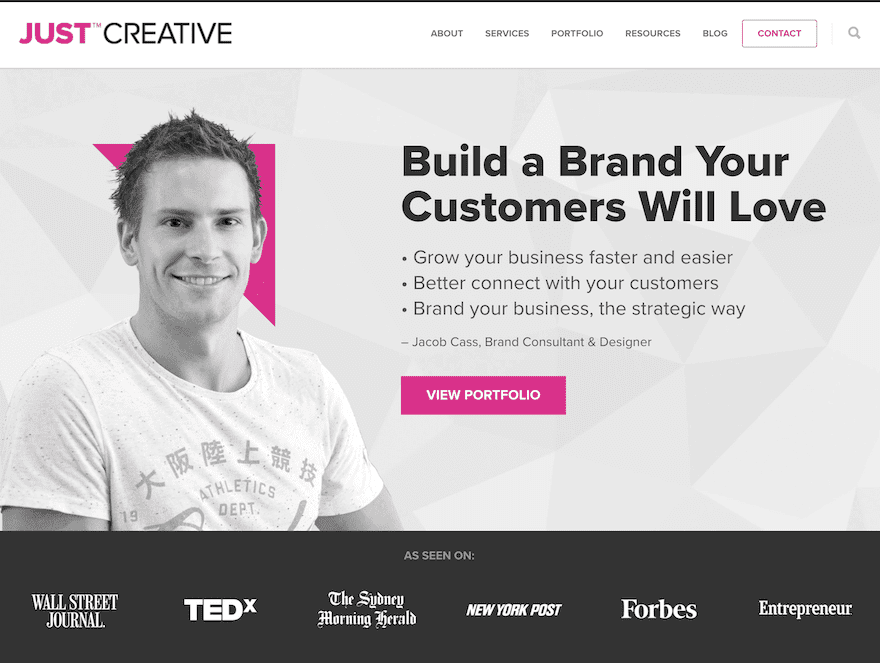
What is Personal Branding?
Personal branding is the way in which you portray yourself and your skills to the world. It’s all about how you want the world to see and perceive you. In some cases, personal branding comes naturally through a person’s unique personality. For other people, it can be harder to define and will take some work to figure out.
Personal branding is based on your story as a professional and a human being. Integrating your brand with your lifestyle is the easiest way to create a personal brand. Having a personal brand that doesn’t match with your life is difficult to maintain. Furthermore, if people notice, it will make you look dishonest and fake.
It’s important for your personal brand to be honest, relatable, and genuine. It’s all about making your uniqueness shine.
A great example of successful personal branding is Neil Patel. He is the face and center of the blog of his own name. Throughout his professional journey, Neil Patel has always been honest about his personal story. Everything he creates is imbued with how he got to where he is. In the video below, he talks about his own personal branding. Not surprisingly, he talks about how personal brands are better when they are part of a corporate brand.
The Differences and Similarities Between Personal Branding and Corporate Branding
Personal branding and corporate branding are similar but not the same. The main difference between them is in the name. Personal branding is for an individual and corporate branding is what represents an entire company. The similarity is that both represent the values and mission of either person or company.
The branding strategies for a company and an individual are not interdependent from each other. In fact, when the CEO of a company has good personal branding, it can help the company’s branding exponentially. The same applies to the CMO, the managers, and even the salespeople.
In some cases, you are your company. Solopreneurs and professional freelancers are both their brand and their business. Many professionals use their name as their company name, that’s where the intersection between personal branding and corporate branding can really take you to the top in your industry.
Take, for example, the case of Chris Do and his company The Futur. Chis Do’s personal branding is based upon his outgoing personality and unique style. The branding for his company The Futur is relative to his own personal branding and is supported by it. Everyone on the team at The Futur supports the company’s branding, but only Chris Do is Chris Do.
If you need a bit more insight into the difference between personal branding and corporate/company branding, watch this episode from the Ask GaryVee show on YouTube. The caller asked Gary about travel blogging and if he should brand it as his name or as something else. Start at 9:45.
Storytelling and Perception
As many brand strategists will tell you, a brand is nothing without a good story. The difference between a company and a person is how their story is told. As I said before, it’s even better if they are intertwined.
Tell the story behind your personal brand through interactions with people and your audience. Spread the message in the way you speak to clients and people you meet. Create a visual perception in the clothes you wear, how you groom your hair and do your makeup. As well as the way you write your social posts–or any other content you create for that matter.
The way you portray yourself on social media and to the press is a huge part of personal branding. Eventually, your personal brand is spread by word of mouth. With the spread of content on social media, your personal brand can reach corners of the earth most folks couldn’t even imagine 20 years ago.
A great example of how personal branding works with storytelling and perception is Vogue Editor in Chief, Anna Wintour. Even though she has a bit of a reputation for the way she runs a team, she is still a giant in the fashion industry.
The story of her work even inspired movies and fictional characters in other stories. Anna Wintour is a brand and she also represents the Vogue brand. As you can see in the screenshot from Vogue below, they even use a little illustration of her hair an glasses, part of her brand.

Start Your Personal Branding Journey
Creating a personal brand for yourself as a professional doesn’t need to be a complicated task. By following a set of steps and guidelines, you can have a confident personal brand in no time.
If you don’t feel like you can do it yourself, there are many personal branding strategists and branding consultants out there. They can be a great help if you don’t know where to start.
In fact, the biggest roadblock to successful personal branding is not knowing where to start.
Linkedin Learning has great resources thanks to Branding Specialist Goldie Chan. Watch the video below on how she approaches personal branding in a corporate setting, a talk she conducted at Lego HQ. And yes, Goldie’s green hair is part of her own personal brand.
Below are the main steps to get you started on your personal branding journey:
Step 1: Find your Uniqueness
The first step towards creating your personal brand is to find your uniqueness. A personal uniqueness can be one of many things:
- Your style of work
- The way you communicate
- Your capabilities
- How you help people
- Your life story
- Your values
- Any other aspect of your life which makes you different…
Essentially, your uniqueness is that one thing that makes you different. Sometimes it’s obvious and other times it needs to be searched for. Believe it or not, finding your uniqueness is affected by mental health. Low self-esteem makes it difficult to see how you are special. This limiting belief stops your personal brand in its tracks. If this is so, consider hiring a mentoring coach or business coach to help you get over that hurdle.
The video below is a TEDx talk with Anand Pillai, he gives great insight and how to discover your uniqueness.
Step 2: Define Your Story
The second step in your personal branding is storytelling. Finding your uniqueness takes you on a journey of personal discovery and that’s where your story comes into play. It’s important to know that your story can be told in many different ways. The idea is for the story to be relatable to your target audience.
For example, let’s say your story is that you grew up traveling the world with diplomatic parents and learned many languages. Then you studied art history and comparative cultures in college and then moved on to graphic design and illustration. You have a deep knowledge of different cultures and artistic techniques, you live as a digital nomad and can speak six languages.
With this as your story you could:
- Direct your work towards children book writers as an illustrator
- Offer graphic design services to traveling wellness coaches
- Sell illustration services for online language learning apps.
When you use your life as part of your personal branding story, you will be more in tune with the work you do. You can tell your personal story a number of different ways, on your own blog, through YouTube videos, by conducting Ted Talks, writing a book and always being open and honest.
Josh Miles gives you valuable insight into how to tell your personal story in the video below. With the help of Peter Parker.
Step 3: Build Your Brand
Once you have defined what makes you and your work stand out, and your story has a purpose, it’s time to actually build the brand.
In many cases, a personal brand builds itself with time. Organically, your personal brand can build itself as you grow in your career. This is great for some people, but if you are just entering into a competitive industry you have to do a bit more work. A great way to start is with visual mood boards and an eye for creativity.
Make sure all your social media profiles have the right name and are all linked to either your Linkedin profile or personal WordPress website.
Write all your social media profiles to represent you and your unique vision. Make sure that the language you use is consistent throughout all your profiles. When posting on social media, keep in mind the language you use and how it can be perceived.
Some people separate their personal (for family) social media accounts from their professional accounts. This is fine if you feel that your private life is not everyone’s business. For some people, showing every aspect of their life is part of their brand. The choice is up to you. If you do separate personal and professional accounts, make sure your professional accounts aren’t lifeless, people still want to see who you are what makes you tick.
Use brand style guides or branding kits to stay on brand. Since we are talking about a personal brand, it will include guides for clothing, hairdressing, makeup, and language. The last one will be easy as long as you believe in what you are standing up for.
The image below is a screenshot of the Mailchimp brand style guide on how to use the Mailchimp corporate language. Take the time to set something like this up for your personal brand. It will be your personal accountability guide.
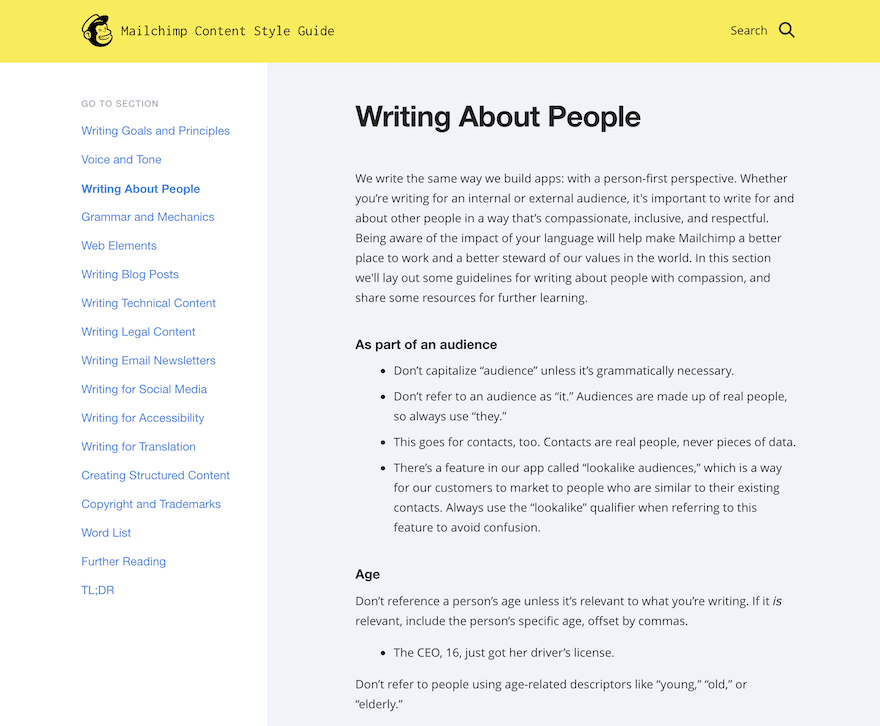
Step 4: Live Up to Your Personal Brand
Your personal brand needs to be easy to maintain. If it’s a true extension of you as a person then that shouldn’t be a problem. But you can’t always control everything around you and sometimes social media or the press can put you in a bad light. This can happen intentionally or unintentionally, but if it does it’s up to you to live up to your brand and make a comeback.
If you made a mistake, be honest about it and apologize. If you were a victim of slander, deal with it in a way that fits your brand so that it doesn’t hurt your business.
Big-name personalities usually hire consultants to help them fix people’s perception of their brand after something in the media made them look bad. If you don’t know how to clear your brand on your own, ask for help.
Another thing to remember about living up to your personal brand is when your company grows and there are more people in your team. You need to transmit your personal branding to your employees so they will see you as a human and a leader they can trust. When they believe in you, they will believe in your company.
Take, for example, Elon Musk, founder of both Tesla and SpaceX. Through his career, he has had to overcome plenty of backlash for his decisions. But that never took away from his influence in the industry he works in. His work with SpaceX is revolutionizing space exploration and he works more and more with NASA. Elon Musk’s personal brand is all about how he views technology and how he wants to be part of the evolution of technology. His personal brand is so strong that his face doesn’t even need to be all over the Tesla and SpaceX websites, everyone knows that Elon Musk is behind those two names. In fact, when you click on the about page for SpaceX, you only see Elon Musk’s name at the bottom in the small print.
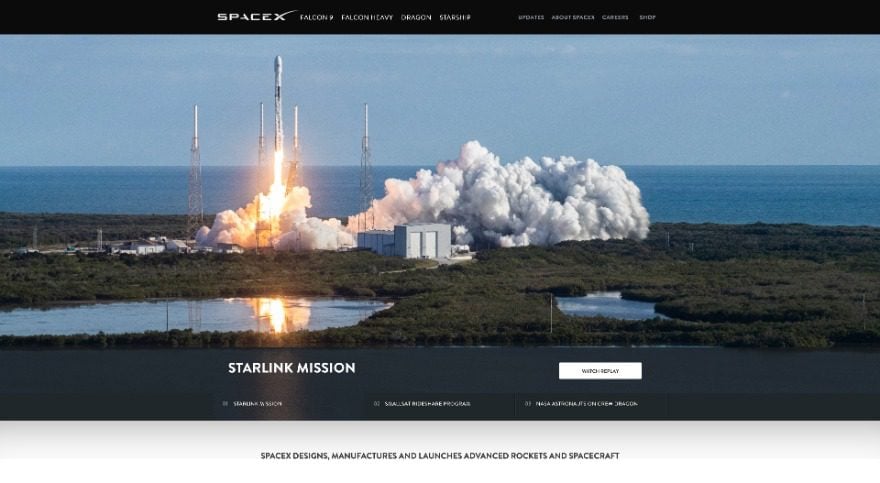
Step 5: Evolve
As your personal brand grows along with your professional career, there may come a time when you need to switch gears. This would be considered a rebrand. The caveat is that rebranding a personal brand will always pull along the previous iterations of it. If you do plan to do a full 360 of your brand, make sure it matches your lifestyle. This makes sense for example if you learn something about yourself and your process and realize that the personal brand you had before doesn’t fit anymore.
This is called personal brand evolution. The best way to tackle this is to show the progress to your followers. Don’t disappear one day and come back with a different brand. Show and explain what is going on and why. Be honest and personal about it. They will understand and follow along for the ride.
One of the greatest examples of how a personal brand can evolve is Martha Stewart. Her brand has been around for over thirty years. What started as a small catering company based in her kitchen grew into cookbooks, homeware collections, and much more. The Martha Stewart brand is now a large corporation but it’s still all based on the woman herself.

Final Thoughts
As you can see, your personal brand as a professional is a huge part of your journey toward success. It’s all about how vulnerable you are to your audience, and how you honestly you tell your story. The more honest and real you are, the better the perception people will have of you. People like to hire humans with whom they can interact. Tell your story in just the right way to make your ideal customer relate to you and want to work with you.
If you haven’t thought of your personal branding yet, why not start now? Start by looking at your Linkedin profile and see if it shows off your uniqueness. Do you have a personal brand, what are your thoughts on it? Share with us in the comments.
Featured Image via Visual Generation / shutterstock.com






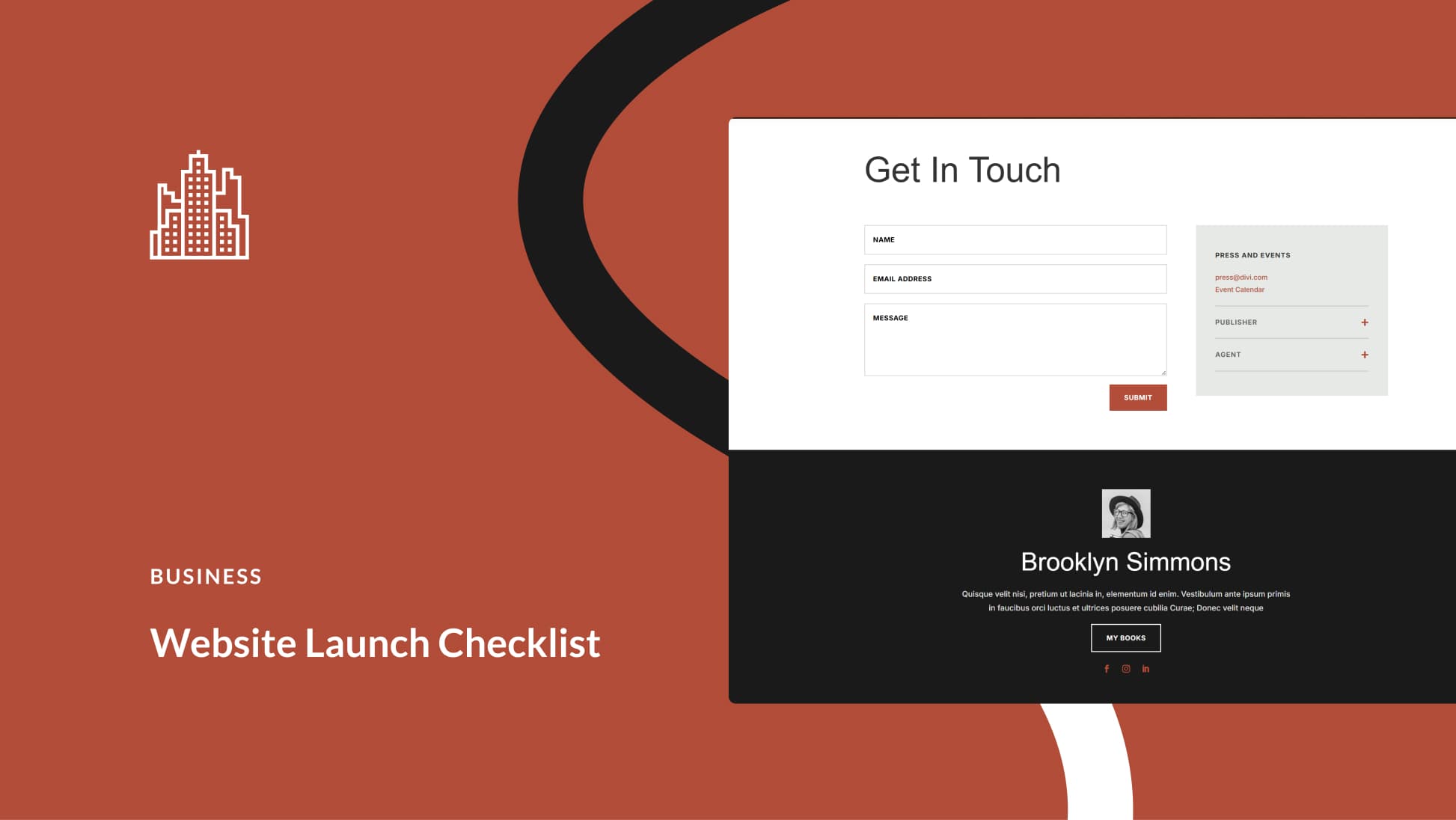

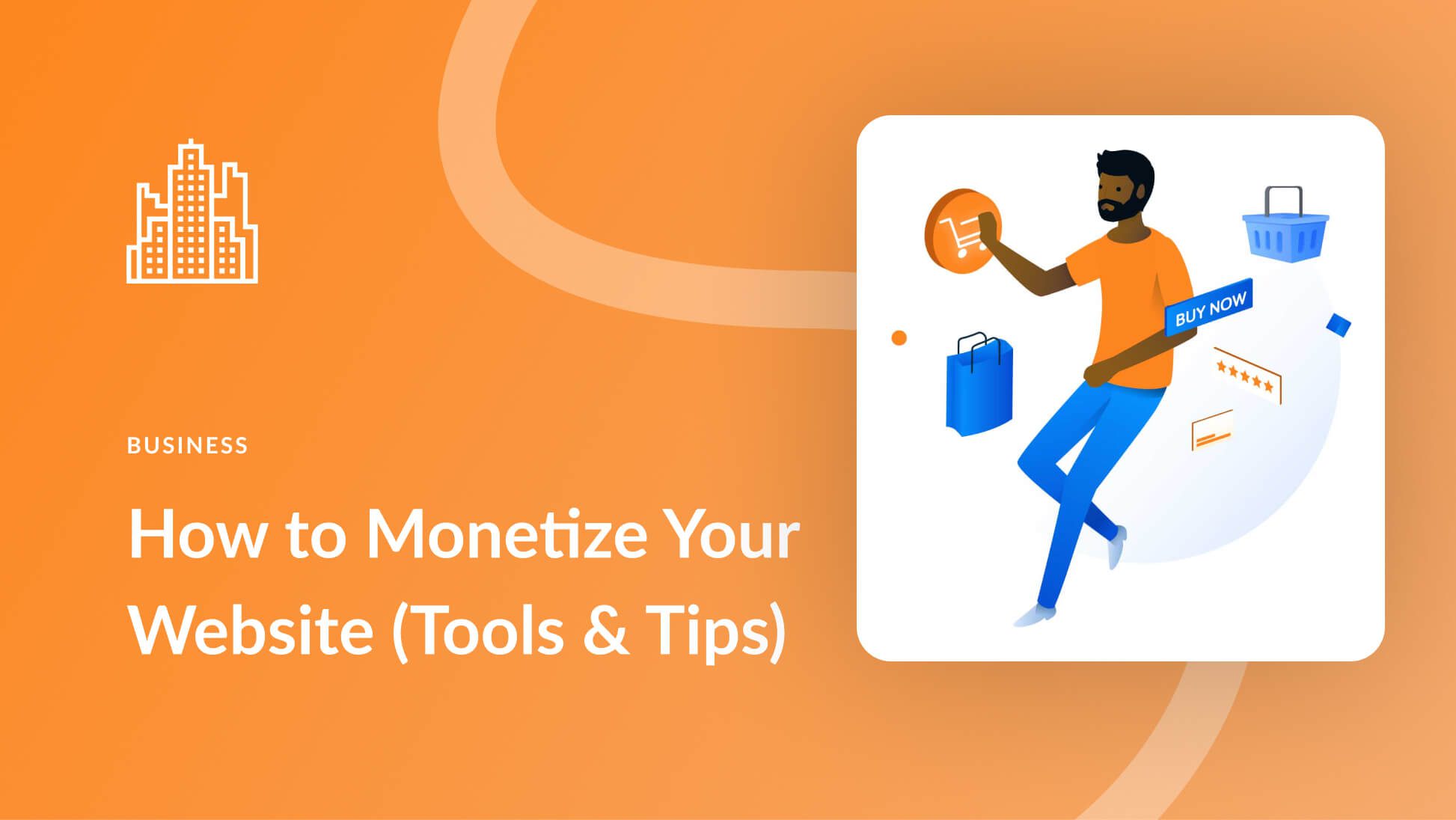
Excellent article, top, top, top, I would like to increase!
The importance of establishing your brand
We listen to recommendations from people, not companies. I’m sure that when you think about buying a product on an unknown site, your first impulse is to search Google for something like: “is site X reliable?”.
If you find reports of other people supporting the company, you buy without much fear. But if you see only reports from the site itself, your level of distrust increases. And if Complain Here appears in the top positions, then your level of distrust explodes.
You don’t even know the people who are recommending – or condemning – the site and you already trust them.
Now imagine, for example, that you want material on digital nomadism and find a book recommended by Matheus de Souza. Unless the price is a drag, you will buy it in minutes.
Another factor that reinforces the importance of having a strong personal brand is the constant change of algorithms on social networks, which always limit the reach of company pages to favor the interaction between personal profiles.
Therefore, influence marketing is already a reality, and it is very much related to branding.
Anyone can be an influencer, even if they don’t have a digital presence. It is possible that you have the power to influence in an environment as specific as that of your company and family or broadly as in a context of thousands of followers on a social network ”.
But you need to be critical and understand exactly why you want to become an influencer and in what area you want to be relevant.
Today, there is an idea, and even pressure, that becoming an influencer is synonymous with achieving success in life. Especially in the age of social media, with several examples of people living on the number of followers they have won.
But understand that the visibility of an influencer will not necessarily bring the results you are looking for. And, most importantly, understand that there is a huge difference between influence and popularity:
Personal branding is not self-promotion
Branding and Buzz usually go together, but that’s not why you need to do the buzz on your own.
Using an analogy, self-promotion is you using a megaphone to announce to everyone on the street how good you are and why they should hire you. And if you work your personal marketing or branding like that, you are doing it very wrong.
By establishing your brand, you will actually encourage others to promote your services. And if it runs very well, it may even be that someone decides to do it on a megaphone. After all, personal branding is not about you, but about what people perceive of you.
And finally, let’s go to the practical part.